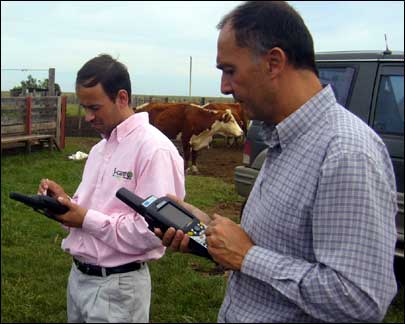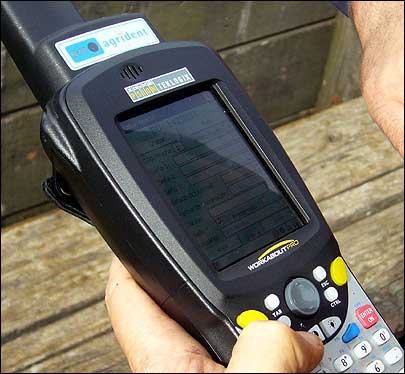Jan 25, 2008In September 2006, Uruguay launched a mandatory program, overseen by the country's Ministry of Livestock, Agriculture and Fisheries (MGAP), to require that all of its 12 million cattle be tracked with RFID tags as the animals pass from "cradle to fork." The RFID system will be used in conjunction with an Internet-based computerized database chronicling the animals and their locations throughout their lives in Uruguay. Thus far, farmers have tagged 2 million animals as part of a pilot on some of the nation's largest farms; the government hopes to have all of the country's cows tagged by 2012.
Uruguay is one of the world's leading beef exporters, shipping live cattle and beef to Japan, Europe, the United States and other areas. Cattle are currently tracked by tattoos on the animals' hides, but for more than a decade, the nation has been seeking a method to provide an electronic method that would help it track and limit the outbreak of diseases, by providing a record detailing everywhere each animal has been.

The initiative will make Uruguay the first nation with full cattle traceability, according to Antonio Pietravallo, CEO of Cybercampo SA, based in Buenos Aires, Argentina. Cybercampo is providing its iCampo software suite to manage data collected from RFID interrogators for the nationwide system. Boreal Technologies, also based in Buenos Aires, is providing hardware integration.
Piloting began with large-scale farms in late 2006. At those sites, a few farmers—but mostly auditors working for the government—are employing Psion Teklogix Workabout Pro PDAs with Agrident AIR 200 RFID interrogators to track cattle as they move from one location to another. The animals are being fitted with 134.2 kHz button ear tags, complying with the ISO 11784 and 11785 standards, provided by such companies as Allflex and Rumitag.
When the pilot is completed in July of this year, says Fabian Audisio, Psion Teklogix's business development manager, the government plans to begin rolling out the system with the first group of farms expected to comply—composed of larger farms, including those taking part in the pilot. Participating farms will need to tag only their new calves. Smaller farms, some with only 10 head of cattle or less, will be the last required to tag their animals.
Thus far, the final reading of a cow's tag has taken place as that animal is being shipped to a slaughterhouse. "However," Pietravallo says, "the ultimate goal is that most harvesting locations familiarize themselves with this technology and manage the RFID readings on site." The pilot program has been working well, Pietravallo adds, without notable problems.
Eventually, the government hopes to continue tracing beef into the production area—where, once an animal has been butchered, large pieces of beef (as well as processed meat packaged for consumers) would all be given tags linked to the animal's original tag ID number. These steps, Audisio estimates, would not occur until several years after the first phase is completed, in 2012.
Pietravallo warns that the Uruguayan government still faces "huge cultural barriers" related to cost and the mechanization of farming systems—making it difficult for the nation to get all of its farmers using RFID. Currently, the government is shipping tags free to those using the system.
Following the pilot, the government intends to purchase about 1,000 Workabout Pro handheld readers, Audisio says. Each device costs about 16,000 Uruguayan pesos ($750). The government will purchase the tags and readers, selling interrogators to farmers as needed. The amount it will charge, or the length of time the tags will remain free, has not yet been determined.


